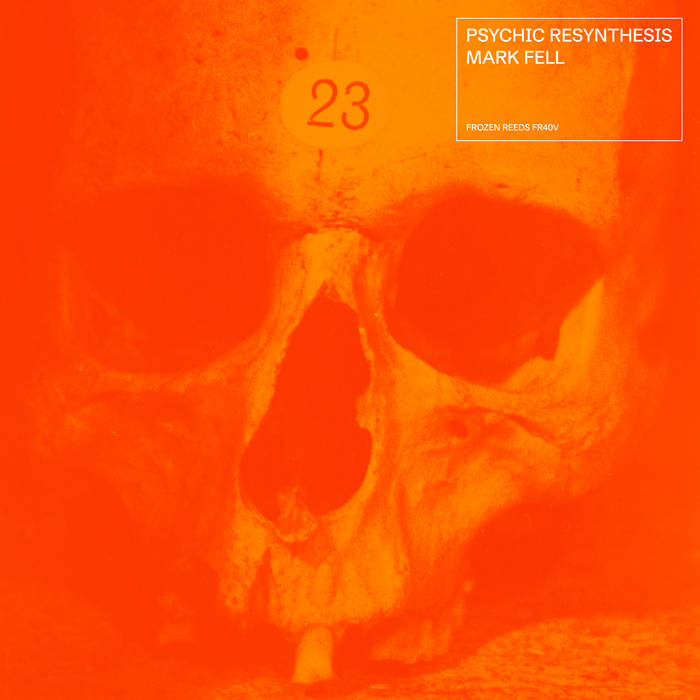Listening to Psychic Resynthesis is like taking a long trek across a changing landscape. Each track moves through a series of plucked, spiky, and scratchy textures, moments of extended silence, and surprising harmonies. It’s not dissimilar to walking through nature and observing new flora at every turn, uncertain of what the next step will bring. Featuring ten tracks composed by Mark Fell and performed by Explore Ensemble, the album both feels desolate, like a solo hiker on a journey, while remaining rooted in the art of collaboration and communication. It shines most in the moments when all the pieces merge into a whole.
Psychic Resynthesis highlights Fell’s attention to structure and the meticulous approach he has to music. A multidisciplinary artist, composer, and theorist, here, he focuses on the details and small textures that emerge with slight pitch and pattern shifts, in the vein of music by composers of the New York School, like Morton Feldman, John Cage, or Christian Wolff. But the album also has deep collaboration at its heart, an interest in group dynamics and the ways an ensemble comes together and falls apart. This is perhaps the album’s greatest and most intriguing driver – that each tone exists not in a bubble, but in an ever-evolving conversation.
Much of the tracks on the album feel the same, with slightly different combinations of tones, rhythms, and patterns that each time interlock in different ways. What stands out is their continued sense of surprise and inquisitiveness: There are many wispy, gossamer textures alongside the prickling ones, giving the music a sense of open-endedness. On ‘Combination #4 ( 7 & 3 | 3 | 7 | 6 & 2 | 1 | 2 & 6 )’, there’s a feeling of tenseness in each note as it lands, like a series of questions arising into an answer; just a few minutes later, on ‘Combination #6 ( 5 | 3 & 7 | • | 5 | 3 | 3 )’, pitches tumble like a waterfall, colliding into a shimmering pool full of more unknowns. But sometimes, there’s even a groove: with ‘Combination #2 ( 4 | 2 | 1 | 4 | • | 1 )’, all the bristling textures interweave in a bouncy, forward-moving rhythm that slowly disintegrates again.
The best moments come when every disparate note unites, even if they don’t reach bliss. With ‘Combination #7 ( • | 6 | • | 2 | 4 | 5 )’, alarm-like double stops are just slightly off with each other, almost concurrent but not quite. As the music slowly broadens and fills out, becoming more nervous until a dissonant cello slices through the fog. It is not cathartic, nor is it calm. Instead, it’s the sudden click of a cluster of tones finally near each other. In the journey of exploring a group dynamic, here it all aligns – every texture brought into one more unpredictable blossom.


